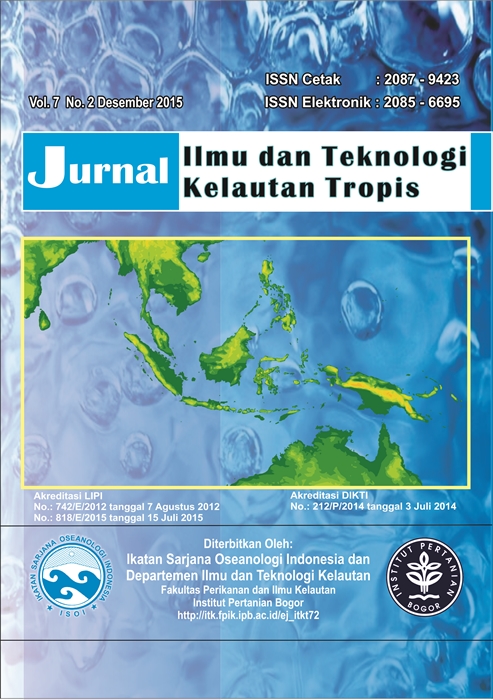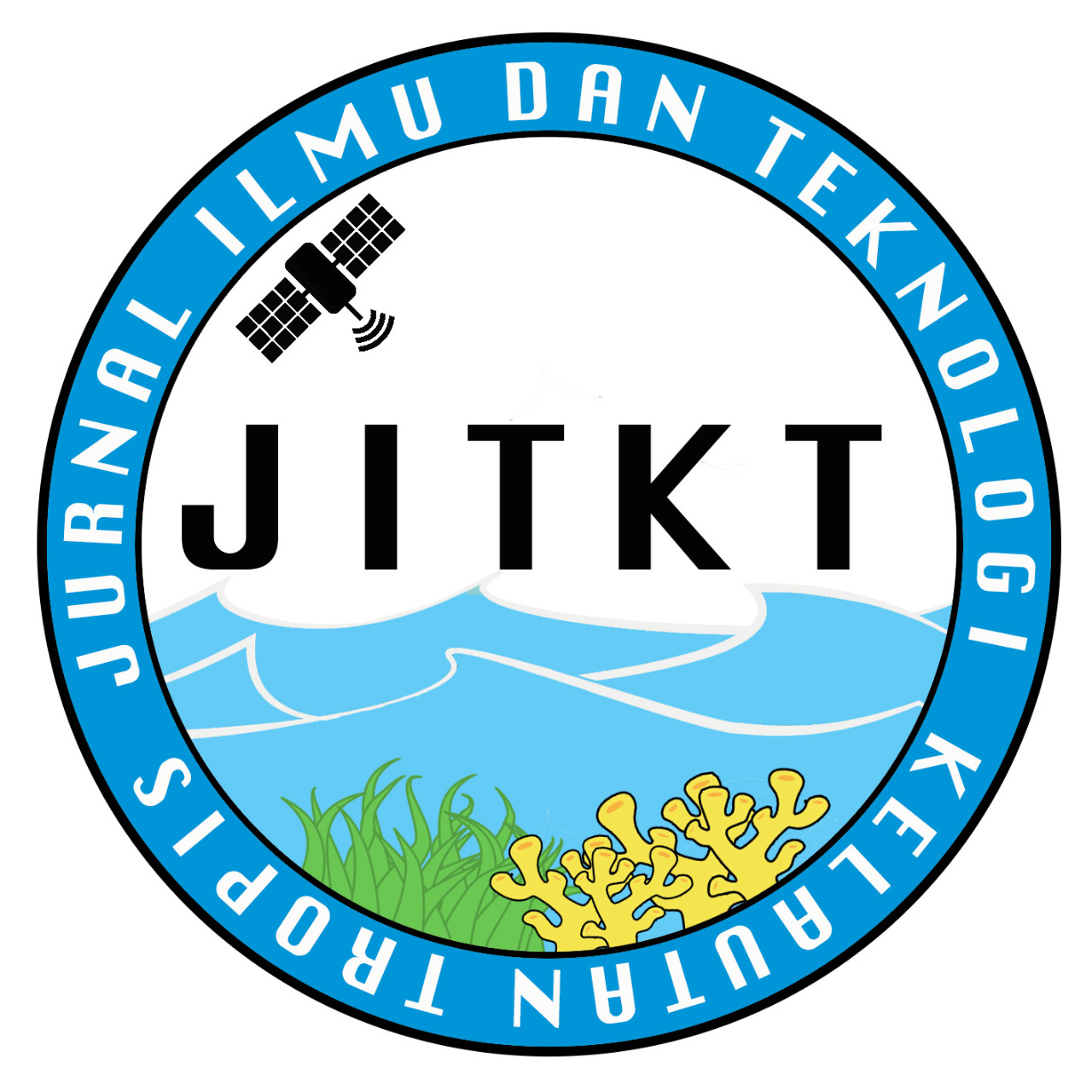CONCENTRATION HEAVY METALS (Cu AND Pb) IN MUSI RIVER ESTUARY
Abstract
The Musi River is one of the biggest river of twelve big rivers in South Sumatra Province. Water quality of this river affects the water quality in the estuary and biological health in its surrounding so that it is important to determine the Cu and Pb concentrations. The purposes of this study were to analize distribution of heavy metals (Cu and Pb) and to determine the water quality status in March and September 2014. The water and sediment samples were collected from eight stations along the Musi River from downstream to the estuary. Heavy metal concentration was analized by employing USEPA 30050B method using AAS Spektra plus variant with air mixure flame – acetylene. Dissolved Cu and Pb concentrations in March were 0,002 - 0,006 mg/l and 0,002-0,003 mg/l, respectively, while in September were 0,001-0,010 mg/lfor Cu and 0,001-0,005 mg/lfor Pb. Cu and Pb concentrations in sediment detected in March were 6,92-16,4 mg/l and 1,9-11,4 mg/l, respectively, while in September were 2,3-13,9 mg/l for Cu and 4,29-9,95 mg/l for Pb. Student test analysis showed that was no significant differences between Pb and Cu concentrations (dissolved and sediment) between March and September. Generally, the concentration of heavy metals Cu and Pb in Musi River estuary were still below specified quality standards.
Keywords: heavy metal, Cu, Pb, the Musi River, estuary
Downloads
The author submitting the manuscript must understand and agree that the copyright of the article manuscript must be submitted/transferred to the Jurnal Ilmu dan Teknologi Kelautan Tropis. This work is licensed under the Creative Commons Attribution-ShareAlike 4.0 (CC BY-SA) International License in which the Author and Reader can copy and redistribute the material in any media or format, and remix, modify and build material for any purpose, but they must provide appropriate credit (citing articles or content), provide a link to the license, and indicate whether there is a change. If you mix, change, or create material, you must distribute your contribution under the same license as the original.



.png)














